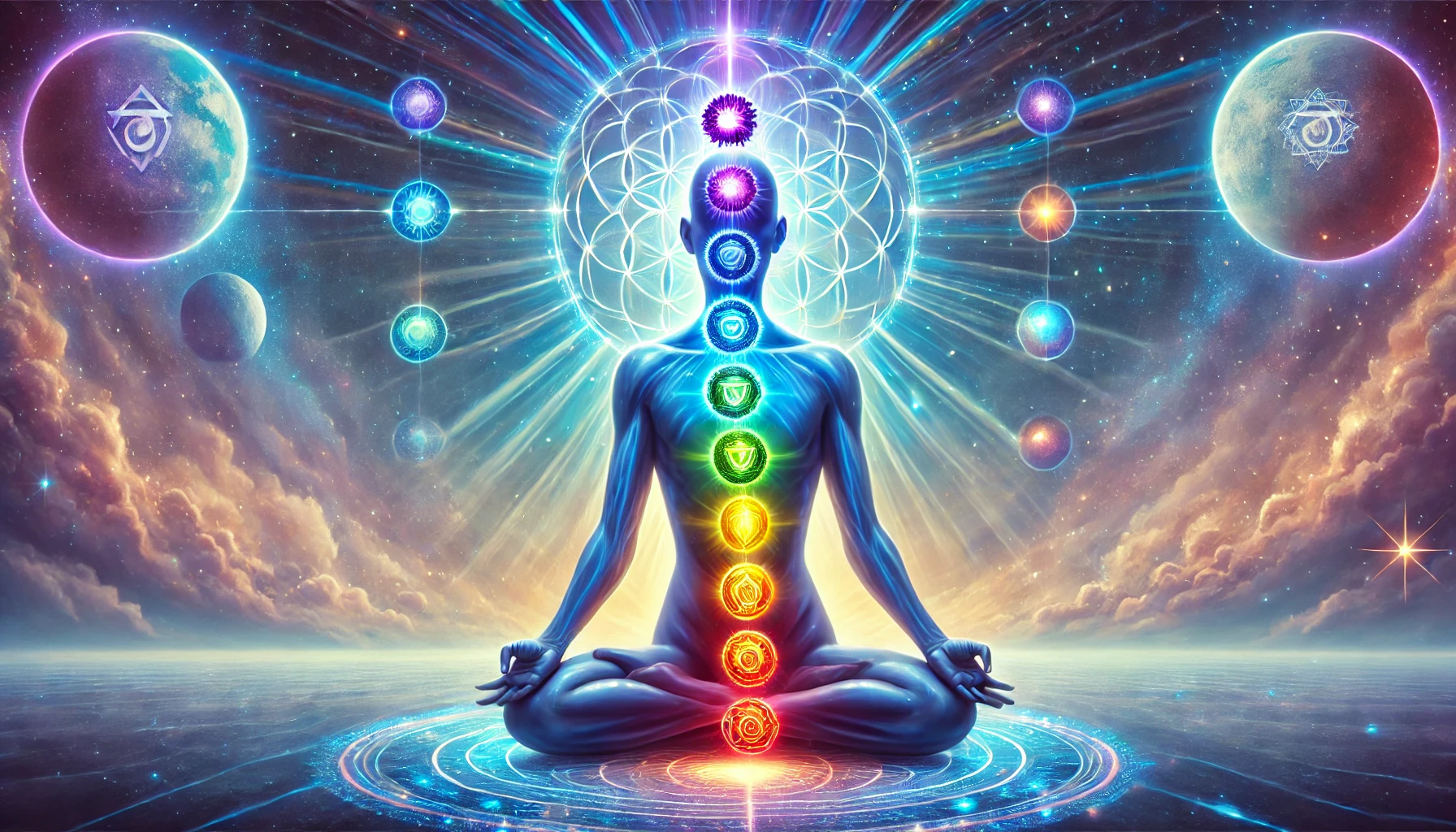7 Chakras Simplified: A Teacher Training Perspective
The concept of Chakras has been at the heart of yoga and holistic wellness for many years. These energy points, emanating from the ancient Indian spiritual traditions, have been the subject of much yoga practice, meditation, and even some modern-day well-being methods. What are Chakras?
Understanding the chakras is paramount for the fledgling yoga teacher: it arms them with the power to take their students on a journey of physical and mental balance to spiritual realms. In this blog, we will break down the seven chakras and look at how they can be integrated into teacher training programs to ensure a solid foundation for future instructors.
What Are Chakras?
The word “chakra” is a Sanskrit word that means “wheel” or “circle.” Chakras are wheels of energy running along the spine from the very bottom up to the crown of the head. These centers govern various parts of our physical, emotional, and spiritual health. Chakra studies help the trainees understand how energy flows across the body and how blockages in these flows may manifest themselves as either physical or emotional issues.

The Seven Chakras Explained
Let’s break down the seven chakras in a way that’s easy to understand and practical for training programs:
Root Chakra – Muladhara
Location: Root of the spine
Color: Red
Element: Earth
The Root Chakra is about stability, security, and grounding. It’s the foundation on which all other chakras build. A balanced root chakra fosters a sense of safety and trust, while imbalances can lead to fear or insecurity.
For Teachers Training: Teach students grounding postures such as Tadasana and Virabhadrasana I to energize this chakra. Encourage students to visualize roots growing from their feet into the earth with every breath.
Sacral Chakra – Svadhisthana
Location: Lower abdomen
Color: Orange
Element: Water
The Sacral Chakra is responsible for creativity, pleasure, and emotions. It deals with the flow of life and our ability to adapt to change. An imbalance here may result in emotional instability or a lack of inspiration.
For Teachers Training: Incorporate hip-opening poses like Baddha Konasana (Bound Angle Pose) and Utkata Konasana (Goddess Pose). Highlight the importance of fluid movements to help students connect with this energy center.
Solar Plexus Chakra – Manipura
Location: Upper abdomen
Color: Yellow
Element: Fire
The Solar Plexus Chakra is the seat of personal power, confidence, and willpower. A balanced Manipura chakra helps individuals take charge of their lives, while imbalances lead to low self-esteem or excessive control issues.
For Teachers Training: Focus on core-strengthening poses like Navasana (Boat Pose) and Plank Pose. Emphasize the link between physical strength and inner empowerment.
Heart Chakra – Anahata
Location: Center of the chest
Color: Green
Element: Air
The Heart Chakra bridges the lower and upper chakras, symbolizing love, compassion, and harmony. When balanced, it fosters healthy relationships and emotional openness; otherwise, it may cause feelings of loneliness or resentment.
For Teachers Training: Teach heart-opening postures like Ustrasana (Camel Pose) and Bhujangasana (Cobra Pose). Encourage students to practice loving-kindness meditation to deepen their connection with Anahata.
Throat Chakra – Vishuddha
Location: Throat
Color: Blue
Element: Ether
The Throat Chakra controls communication, self-expression, and truth. A balanced Throat Chakra allows for ease in expressing oneself, while imbalances manifest as difficulty communicating or excessive talking.
For Teachers Training: Practice poses like Matsyasana (Fish Pose) and Sarvangasanaergy.
Third Eye Chakra – Ajna
Location: Between the eyebrows
Color: Indigo
Element: Light
The Third Eye Chakra corresponds to intuition, insight, and inner wisdom. A balanced Ajna chakra enhances clarity and focus, while blockages may result in confusion or a racing imagination.
For Teachers Training: Incorporate meditative practices and poses like Balasana (Child’s Pose) and Uttanasana (Standing Forward Bend). Suggest journaling to develop intuitive awareness.
Crown Chakra – Sahasrara
Location: Top of the head
Color: Violet or White
Element: Consciousness
The Crown Chakra concerns spirituality and enlightenment, connecting us to universal oneness. Imbalances can lead to feelings of isolation or disconnection from one’s purpose in life.
For Teacher Training: Focus on restorative poses like Savasana (Corpse Pose) and meditation practices. Discuss the significance of surrender and mindfulness for connecting with Sahasrara.
Why Chakras Matter in Teachers Training Program:
Understanding chakras is not merely about learning ancient philosophies but about applying them in modern yoga teaching.
- Holistic Teaching Approach: Chakra knowledge enables teachers to address physical, emotional, and spiritual growth.
- Personal Transformation: Chakras help trainees recognize and heal their imbalances, supporting personal growth.
- Class Planning: Chakra-based lessons can target students’ needs, whether grounding, empowerment, or relaxation.
- Therapeutic Applications: Chakra studies help instructors address stress, anxiety, and emotional challenges in students.

Bringing Chakras into Yoga Classes
Teachers can elevate their sessions by integrating chakra knowledge:
Theme Classes: Dedicate each session to one chakra with corresponding poses, meditations, and affirmations.
Visualization Techniques: Encourage students to visualize the color or symbol of the chakra they’re working on.
Sound Healing: Use bija mantras like “Lam” for the Root Chakra or “Om” for the Crown Chakra to enhance energy flow.
Guided Meditation: Lead students through meditations to balance all seven chakras.
Practical Tips for Training Students
Self-Practice: Regularly practice yoga and meditation, focusing on each chakra individually.
Study Resources: Explore books or workshops that dive deeper into chakra studies.
Experiment: Try pranayama, affirmations, and visualizations to balance your energy centers.
Observe Students: Tailor your teaching based on chakra imbalances in students.
Collaborate: Share insights with fellow trainees to broaden your understanding.
Final Thoughts
The seven chakras act as a roadmap for balance and well-being. Simplifying this wisdom into practical insights helps aspiring instructors connect deeply with themselves and their students. Whether grounding with the Root Chakra or seeking enlightenment through the Crown Chakra, chakras are transformative for both personal and teaching journeys.
Do you wish to know more about the chakras?
Join the online teachers training program of Online Yoga Life and learn to weave chakra wisdom into your teachings. Grab this chance to start your journey today for transforming lives with the potent medicine of the chakras.
Thank you!




















